The main slogan of the Venetian capital echoes in the minds of all those who have visited the city: "Venice is unique!", It is often written even between the lines of our articles and the reason is simple: it is the pure truth. The city of Venice stands out from the others for history, culture, for the symbiosis with water and the lagoon environment but also for the structure and the particular division into six areas called sestieri. The sestiere corresponds to the neighborhood of the other cities but includes very large areas and sometimes even islands not connected by bridges. The traditional names of the sestieri of Venice are: Cannaregio, Castello, Dorsoduro, Santa Croce, San Marco and San Polo. A series of articles dedicated to a single district will accompany our readers through the historical places of the Serenissima.
The itinerary starts from San Marco, the most famous, important and sumptuous district, the beating heart of the city of Venice which every year is besieged by millions of tourists from all over the globe, eager to admire the eternal beauty of the square. San Marco, the Doge's Palace, the Bridge of Sighs and many other places of interest that we can't wait to let you discover.
The San Marco district is located in the center of the city, bordered to the north by the Grand Canal, to the south by the San Marco basin, to the west by the Rio del Palazzo and to the east by the Rio San Zulian. The area takes its name from the Basilica built to contain the body of the evangelist San Marco, patron saint of the city.
The San Marco Square: the living room of the world
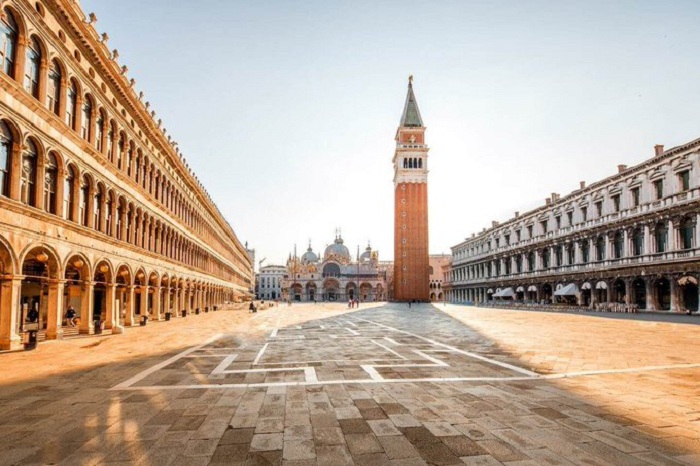
The itinerary can only start from the beating heart of the city: known all over the world and repeatedly reproduced in miniature, Piazza San Marco is the salon of the world, the most beautiful and well-known public square in Venice. The only city space to be defined as "square", all other meeting places are called "fields" and since the times of the Republic has hosted all the most important events in the civic life of the Serenissima. The square is home to the Basilica of San Marco, the enchanting testimony of the magnificence of the Republic of Venice and the city's religious symbol. This large open space, in fact, is the perfect synthesis of the two pillars on which Venice is founded: religious faith and political life. The Greek cross building has five domes and overlooks the square with its marble facade dating back to the thirteenth century and covered with more than a thousand square meters of gold mosaic tiles. Inside there is the famous mosaic cycle of golden tiles, for which the Basilica is called the "golden church".
From Piazza San Marco stands what is the reference point and most recognizable symbol of Venice, we are talking about the Campanile of San Marco. Built from the ninth century, the bell tower originally served as a watchtower and lighthouse. Over the centuries he has undergone various modifications and renovations due to the damage suffered by lightning and earthquakes, until the tragic collapse that occurred in July 1902. Fortunately, the event did not cause victims and it was immediately decided to rebuild of the city council: “how it was, where it was”. The reconstruction works were completed on 6 March 1912 and inaugurated on the feast day of San Marco. The bell tower has a square barrel shape 12 meters wide and almost 100 meters high, surmounted by the iconic pyramidal cusp from which rises the statue of the Archangel Gabriel covered in gold and more than three meters high. At the base of the imposing bell tower is the Sansovino lodge, a small building built in the first half of the sixteenth century to a design by Jacopo Sansovino. The building was designed to accommodate the patricians who wanted to access the government offices located nearby.
On three sides of the square, San Marco is surrounded by the Procuratie, imposing buildings typical of the Venetian environment that take their name from the fact that the procurators of San Marco housed there: are commonly called Procuratie Vecchie, Procuratie Nuove and Ala Napoleonica. The Procuratie Vecchie extend for 152 meters from the Clock Tower, a famous Renaissance building whose arch connects the square with the Mercerie, up to the Napoleonic Wing. Until the end of the 80s of the twentieth century they were the headquarters of Assicurazioni Generali which still today own 85% of the building surface. The Procuratie Vecchie currently houses numerous shops on the ground floor and offices on the upper floors. The construction of the Procuratie Nuove was completed in 1640 by Baldassarre Longhena, the complex of buildings extends from the Napoleonic Wing to the Campanile of San Marco. During the Napoleonic era, the Italic Kingdom used the Procuratie Nuove as the Royal Palace, a function that they also maintained under the Savoy in the years ranging from 1866 to 1946. Today they house the Correr Museum, the Risorgimento Museum, the Archaeological Museum on the upper floors. . On the ground floor, under the arcades, there is the famous Caffè Florian, the oldest bar in Italy and founded by Floriano Francesconi in 1720, it was frequented by famous people such as Goldoni, Casanova, Proust, on the chairs of the Riccardo Selvatico café in 1893 he conceived the Venice Biennale. During the French occupation, Napoleon Bonaparte gave the order to demolish the Church of San Geminiano and to close the horseshoe-shaped Procuratie to build the so-called Napoleonic Wing. The building has a facade very similar to the Procuratie Nuove and as a new wing of the Royal Palace, it should have housed a ballroom overlooking the square.

Ducal Palace: the house of the Doges
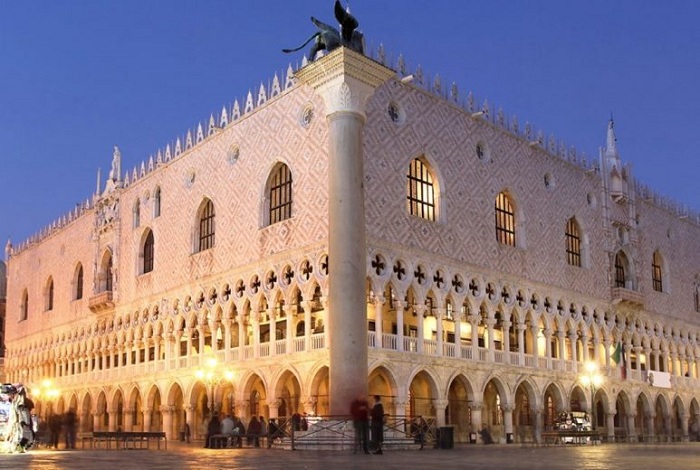
A masterpiece of Venetian Gothic, one of the symbols of the cities of Venice, the monumental Palazzo Ducale (Ducal Palace) was the seat of the Doge, the highest office of the Republic of Venice. Built in the year 812, the Palace has followed the entire history of the Republic of Venice, from its dawn to its fall despite being hit by numerous fires and rebuilt several times. After the annexation of Venice to the Kingdom of Italy, the Doge's Palace became a museum and today houses the Civic Museum which records more than a million visitors every year. The beauty of the Palace is given in particular by the two facades in Venetian Gothic style, one facing the San Marco square and the other towards the bacin. The facades develop on two inlaid colonnades, apparently very small but capable of supporting the heavy bulk of the main body. Crossing the entrance door of the building it is possible to visit the Doge's apartment, inside which you can admire the works of extraordinary artists such as Tiziano, Veronese, Tiepolo and many others, it is also allowed to cross the armory, the prison and the Sala del Maggior Consiglio where Tintoretto's “Il Paradiso” is exhibited, known for being the largest canvas in the world, with its 7.45 meters high and 24.65 meters wide.
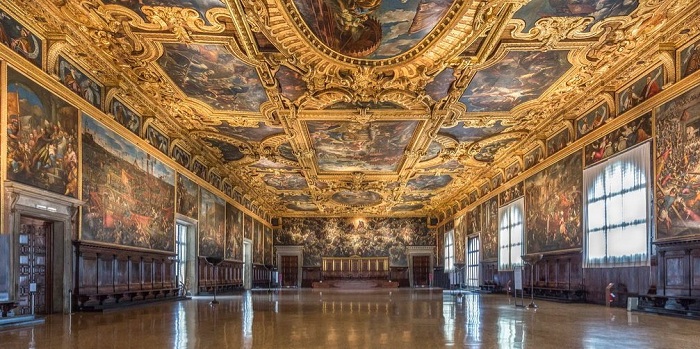
The Mercerie: the venetian shopping streets
After immersing yourself in the immortal beauty of St. Mark's Square, it is legitimate to take a break and dedicate a few hours to shopping. What better place to shop than the Mercerie, where "all the things in the world you want on this street can be found"? Mercerie (Marzarie in Venetian) are the main commercial artery of Venice, a system of streets that hosts an infinite number of shops and commercial activities. Mercerie has been the commercial nucleus of Venice since the times of the Republic, when precious goods were sold and the shops remained open until late at night. Today the narrow streets of the Mercerie that connect the Rialto area to the San Marco district are home to high fashion shops, jewelers, leather goods, artistic glassworks and an almost infinite quantity of souvenir shops. If once the narrow streets of le Mercerie were only visited by Venetians looking for affordable offers, today they are invaded by millions of tourists visiting Venice. From the Mercerie it is time to continue our journey in the San Marco district and to visit another monumental pillar of the history of the Serenissima.
Bridge of Sighs: sighs of love and freedom
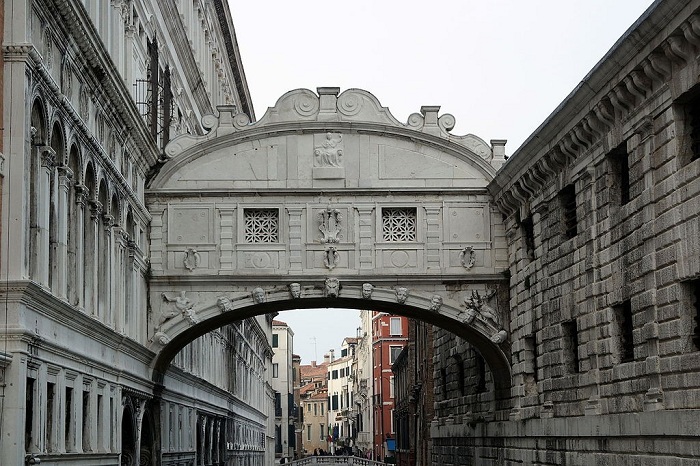
To access the Prison of the Doge's Palace it is necessary to cross the Bridge of Sighs, one of the most famous and photographed bridges in Venice. The name of the bridge dates back to the nineteenth century, when some European poets imagined the last sigh of the prisoners who saw the outside world for the last time while crossing the bridge. Legend has it that the name is attributed to Giacomo Casanova who was able to cross the bridge in 1755 after being accused of anti-religious propaganda. It is possible to admire and photograph the Bridge of Sighs from the ancient Ponte di Paglia, from which you have a perfect view of the monument. The bridge is built in Istrian stone, in perfect Baroque style it was built in the seventeenth century by Antonio Contin. Every year many couples of lovers exchange kisses as they pass under the Bridge of Sighs, also known as the "Bridge of lovers". A famous and old popular belief has it that two people who love each other, kissing at sunset on a gondola under the bridge, will enjoy eternal happiness. An excellent way to guarantee a few more gondola rides. To the detriment of commercial ideas, many intellectuals, artists and writers have been inspired by the splendid view of the Bridge of Sighs, among them there is Edgar Allan Poe but also the painter Mikhail Vrubel.
Grassi Palace: from patrician residence to casket of contemporary art

From Piazza San Marco, along the Grand Canal in a northwest direction, it is possible to admire what is called the last patrician palace overlooking the Grand Canal before the fall of the Republi:, the Palazzo Grassi (Grassi Palace), one of the most famous buildings in Venice and seat of numerous art exhibitions that attract the interest of enthusiasts from all over the world. The palace was built starting from the second half of the 1700s on a plot of land purchased by the Grassi family in several phases. Between 1840 and 1875, the building changed owners several times before ending up under the leadership of Baron Simone de Sina, a wealthy Greek financier who made substantial structural changes. Even during the 1900s the building changed owners several times, in 1983 it was bought by Fiat, which entrusted the renovation work to the well-known designer and architect Gae Aulenti. Palazzo Grassi overlooks the Grand Canal with a neoclassical facade that brings to mind the splendor of the influential and wealthy Grassi family. The current owner is the French entrepreneur Francois Pinault, who in 2005 entrusted the renovation work to the Japanese architect Tadao Ando. Palazzo Grassi houses Pinault's modern art collection, one of the five largest in the world: an artistic heritage that includes paintings, sculpture, photographs and videos.
Nightlife and movida: theaters, bacari' and Hard Rock

Within the boundaries of the San Marco district there are a large number of bars, restaurants and clubs where you can relax and entertain once the sun has set over the city. The cafes in Piazza San Marco are famous where you can have a drink while admiring the beauties of the Salotto in the moonlight, but equally famous are the venetian bacari, a typical tavern with a restricted and spartan atmosphere. An aperitif at sunset, on the edge of a canal, is the best way to end a Venetian day. For those wishing to spend a cultural evening, away from the nightlife, in San Marco there are two important theaters: La Fenice and Goldoni. The first is located in Campo San Fantin and is the main opera house in Venice, one of the most important and prestigious in the world. Inaugurated in 1792, it was rebuilt in 1838 and 2003. The Gran Teatro La Fenice has witnessed numerous world premieres by the likes of Rossini, Bellini and Verdi. The Carlo Goldoni Theater is located near the Rialto Bridge, was inaugurated in 1622 and is the oldest theater in Venice still active. A magical place that was led by artistic directors of the caliber of Giorgio Gaber, Giulio Bosetti and Alessandro Gassmann. Every week, great artists perform in the theaters of San Marco, a perfect place for lovers of opera and theater.
Another great night attraction of San Marco is undoubtedly the Hard Rock Cafe in Venice. As in any self-respecting large tourist city, Venice also has the most famous cafè/pub with a musical theme in the world. Washed by the waters of the Orseolo Basin, just behind the Procuratie Vecchie,, the HRC was inaugurated in 2009 and is built inside a historic building in perfect Venetian style: large windows, refined decorations and a view of the river. An oasis of modernity perfectly integrated into the surrounding environment where you can spend nights dedicated to food, alcohol and good music.
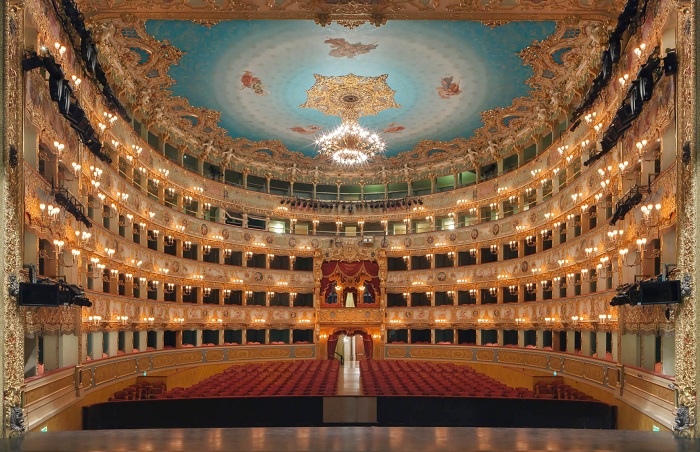










Lascia un commento